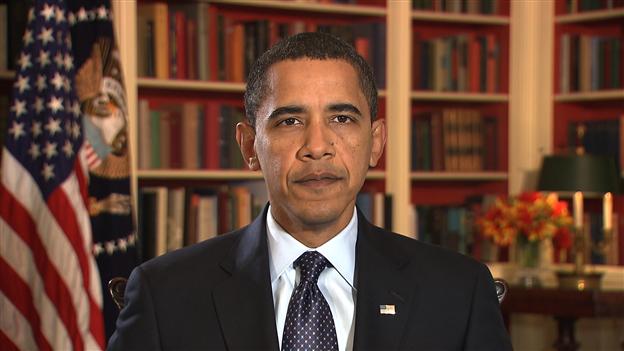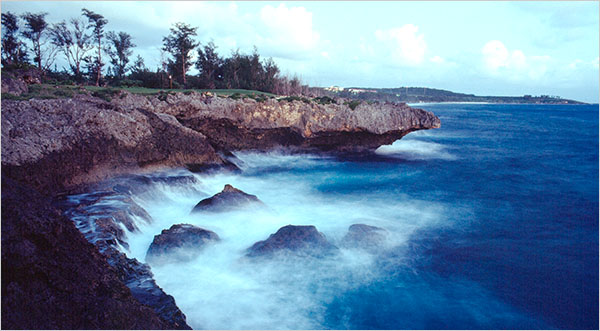The Texas Governor announced this week that he supports legislation for a $5,000 rebate for plug-in hybrids. As the Wall Street Journal reports, Perry is an outspoken critic of government environmental regulation, saying that the “increasingly activist EPA[‘s]” initiatives to stem greenhouse gas output are “absolutely disastrous” for the Texas economy. The WSJ says this initiative is to sidestep greater regulation from the DC mountaintop…he is throwing the liberals up there a bone so they will get off Texas’ case.

From the governors prepared statement:
Rather than wait for more mandates and punishments for environmental non-attainment, let’s continue encouraging innovation. I support giving Texans in the non-attainment areas of our state a $5,000 incentive towards a purchase of Plug-In Hybrid Electric Vehicles, using the funds Texans have already paid to reduce emissions, while providing a unique way to store wind energy.
This is an exciting development for us down here in Texas, long known for being a fossil fuel state. Combining this with the $7,500 tax incentive on the docket in DC for a total of $12,500, Texans might have a fighting chance at purchasing a Chevy Volt, expected to retail for around 40 grand.
Perry would probably never refer to himself as an environmentalist in the same vein as most of the environmental movement, but at least he recognizes change is coming. Moral motives aside, any move in the right direction is welcomed. Thanks, Gov.
Check out the WSJ article here.
Posted in Energy, Global Warming, Renewables | Tagged Air Quality, alternative fuels, clean air, environment, green, green rebate, hybrid, Plug ins, Renewables, Rick Perry, tax incentive, Texas |
January 28, 2009 by Public Citizen Texas
In case you haven’t heard, a scientific study released by NOAA on Monday shows the need for immediate action to curb Global Climate Change. According to this study, “changes in surface temperature, rainfall, and sea level are largely irreversible for more than 1,000 years after carbon dioxide (CO2) emissions are completely stopped.” This is truly horrible news.
We as citizens of the world must make great changes if we want to preserve at least part of the world we live in for our children and grandchildren (or for that matter our great-great-grandchildren). The CO2 we are putting into the atmosphere today will still be affecting the earth’s climate in a millennium.
The full text of this developing story is located below via the link:
NOAA’s Findings
This finding should be an indisputable marker to everyone that the time for debate on this issue is over. Great changes are now inescapable and the time to make them is upon us.
Posted in Global Warming | Tagged climate change, Global Climate Change, noaa, Texas |
 The Texas Observer just ran an article on the top ten issues the Texas Legislature should address this session. Anybody want to guess what number two was?
The Texas Observer just ran an article on the top ten issues the Texas Legislature should address this session. Anybody want to guess what number two was?
If you guessed climate change… you’ve probably been reading this blog. And you’d be right!
The Observer expects for Texas leaders to more amenable to climate change action than they have been in years past. Their reasoning?
Congress and the Obama administration have signaled that major federal climate change legislation is in the works. “The Obama package will give Texas a choice: lead or get left behind,” says state Sen. Eliot Shapleigh, D-El Paso. “Luddites need to move away and let leadership take the day.”
The article continues:
As the nation’s top emitter of carbon dioxide, Texas arguably has the most to lose and the most to gain from federal action, says Bea Moorehead, executive director of Texas Impact, an interfaith advocacy group. States that move sooner to cut their greenhouse-gas emissions will have an easier time adapting to a carbon-restrained world. Advocates like Moorehead want to build on the successes Texas has had with wind power and energy conservation by pushing incentives for the solar industry and expanding efficiency standards. Such measures, they say, will create jobs and cut air pollution while replacing sources of greenhouse gas.
I was particularly excited about this article because we’ve been singing the same tune in informational handouts to all your legislative members.
If you agree that this is the message your legislators need to hear, loud and clear… TELL THEM SO. We can print out brochures and hand them to legislative staffers, and the Observer can print articles on what they think the legislature ought to be doing, but ultimately, politicians respond to what their constituents want.
This is a novel idea, I know. You’re thinking; “But Sarah, I’ve been wanting politicians to pursue a whole host of progressive policies for years, and they haven’t happened.”
Well, have you every straight up asked? Politicians aren’t mind readers, you know. Sometimes we’ve got to count ourselves lucky if they are readers at all. So if you want them to know what you want, you’ve got to tell them. When you contact your legislators, they take it much more seriously than a small record of your personal opinion. As few as five personal letters can key a legislator in that an issue is important. Just ten letters can lead them to think they’ve got “constituent trouble” and cause them to support or vote against a particular bill.
Visit the website Who Represents Me? If you know your address, it will only take about 30 seconds to know who your legislators are as well. Write them a letter. Or pick up the phone and give them a call. You probably won’t get to speak with your rep directly, but you can definitely ask for the staffer that works on energy and give them your two cents. Make your voice be heard!
Posted in Global Warming | Tagged Bea Moorehead, Carbon Dioxide, Citizen Action, climate change, Congress, Eliot Shapleigh, Energy Efficiency, Obama administration, Solar Incentives, Texas, Texas Impact, Texas Legislature, texas observer, The Observer, The Texas Observer, Who Represents Me? |
 Congress is voting on Obama’s much anticipated stimulus package today. If you want this package to include measures to promote renewable energy and a public works project to make public buildings more energy-efficient — and if you read this blog, I bet you do — tell your legislator now! It will only take a minute, and could make a HUGE difference for America’s energy future.
Congress is voting on Obama’s much anticipated stimulus package today. If you want this package to include measures to promote renewable energy and a public works project to make public buildings more energy-efficient — and if you read this blog, I bet you do — tell your legislator now! It will only take a minute, and could make a HUGE difference for America’s energy future.
Act Now!
Posted in Efficiency, Energy, Global Warming | Tagged Congress, Economic Stimulus Package, Energy, Energy Efficiency, Green Stimulus, obama, public works project, renewable energy, stimulus package, Texas |
 Want Austin to do think outside the box on energy efficiency?
Want Austin to do think outside the box on energy efficiency?
Think we should invest in storage technology to store all that beautiful wind and solar energy?
Want to see city hall but never had a reason to?
On Wednesday, Jan 28, Austin Energy will host a town hall meeting at city hall (301 W. 2nd Street) to solicit public comments and input on their future energy planning. Here’s the full schedule. If you can’t make one, make the other.
January 28, 2009 (Wednesday) City Hall Council Chambers (301 West 2nd Street); 6-9 PM
February 3, 2009 (Tuesday) Town Lake Center – Assembly Room (721 Barton Springs Road)
February 5, 2009 (Thursday) Carver Branch Library (1161 Angelina)
Public Citizen, in case you were unaware, recommends mega energy efficiency programs (since there’s so much available in Texas), larger investment in renewable power (especially solar), and development of energy storage technologies like compressed air energy storage, thermal storage, advanced batteries, ultracapacitors, and flywheels. Learn more here. Austin Energy’s info is here.
-Matt
Posted in Efficiency, Energy, Global Warming, Renewables | Tagged Austin Energy, Energy Efficiency, energy storage, solar energy, Texas |
This morning President Obama outlined his energy and environmental policy and how it fit into his broader effort to jump start our flailing economy. It was a like taking a breath of fresh air to hear someone actually addressing the environmental problems we face reasonably. Finally!

He focused on the problems we face as an opportunity to secure our interests and security, create jobs, and restore America’s moral standing in the world. Outlining his plan in four pragmatic steps, he stated unequivocally that “it will be the policy of [his] administration to reverse our dependence on foreign oil while building a new energy economy that will create millions of jobs.”
1) The plan aims to create 460,000 jobs that will provide the workforce to double the domestic production capacity of energy. Among the projects he listed were 3000 miles of transmission lines to move this energy and to increase the energy efficiency of government buildings and private residences.
2) It aims to revitalize the American Auto Industry by encouraging energy efficient innovation, hoping the new cars will be produced in the US and meet more stringent emissions standards by model year 2011. He ended by saying that by 2020 all cars would get at least 35 mpg, reducing daily oil consumptions by 2 million barrels a day.
3) Referencing the Bush Era EPA’s rejection of California’s and 13 other state’s waiver requests to increase emissions standards, he said “Washington stood in their way”. California had sued the EPA for inaction…it took them two years to review their application. And they rejected it. He wants the EPA to empower rather than stifle states to make these changes. He said that the EPA will review the California waiver rejection and insinuated that it would be approved.
4) He argued that energy independence was important to secure our interests and safety, as hostile governments maintain power over the US because we depend on them for oil. Dwindling resources, hostile regimes, and unhealthy climate problems are the facts that underpin his plan and it is his intention to use these to guide pragmatic problem solving. He emphasized that facts, not ideology would be used to inform the conversation on these issues. (What a concept!) He said the aim ought to be for America to set the standard and call nations like India and China to greater participation in what needs to be a global effort to clean up our environment.
Mirroring the talking points of Public Citizen, Mr. Obama has taken the first sensible step toward a real remedy for this problem. We are happy to see someone is finally thinking in the Whitehouse. How refreshing…
You can read the president’s full remarks here.
Go to http://www.whitehouse.gov/agenda/energy_and_environment/ to see the Obama/Biden Energy and Environmental Plan.
Posted in Global Warming | Tagged California Waiver, climate change, Energy, environment, Environmental Policy, EPA, Executive order, fuel efficiency, Global Warming, green, obama, Texas |
 American homes lose $13 billion in wasted energy every year, averaging a whopping $150 per family. What’s more, the average family spends about $1,900 per year on utility bills.
American homes lose $13 billion in wasted energy every year, averaging a whopping $150 per family. What’s more, the average family spends about $1,900 per year on utility bills.
In these economic times, it’s hard to fork out that kind of money.
What’s even more outrageous is that energy companies are currently lobbying Congress for more handouts and more “pork,” while everyday citizens are feeling the stranglehold of energy costs.
There is a solution – but we need to act fast.
Congress is considering setting aside more than $10 billion ($6 billion in grants, $4 billion in tax credits) for homeowners to weatherize their homes as part of the Obama administration’s economic stimulus package. The “green energy stimulus” also would include measures to promote renewable energy and a public works project to make public buildings more energy-efficient.
Act today and urge lawmakers to include energy-efficiency initiatives for you and other homeowners in the stimulus package. Tell them to resist pleas for “pork” from the nuclear and oil industries, which have gotten plenty over the past few years – at your expense.
Posted in Efficiency, Energy | Tagged economic recession, Economic Stimulus Package, Energy Costs, Energy Efficiency, Green Energy Stimulus, obama, renewable energy, Texas, Weatherization |

CPS committed to spend $60 million more on the proposed expansion of the South Texas Nuclear Project at its Board of Trustees meeting on Tuesday, which brings the city utility’s total expenditures on units 3 & 4 to $267 million.
The construction and operating license still languishes at the NRC, almost a year and a half after being submitted.
Somewhat lost amid the honorings, approvals, and statements of the Board meeting was the fact that STP 3 & 4 ranking for DoE’s loan guarantees has slipped from #1 to #3 (out of 14). Updated rankings will be out in March. 3rd seems respectable. It’s a bronze medal, right? Well, there’s only $18.5 billion slotted for loan guarantees and each reactor can cost $6-who-knows-how-many-billions.
Gschwartz’s piece on this week’s Board of Trustees meeting sums things up pretty well on SA Current’s Queblog. The Express-News touched on it here and here.
-Matt
Posted in Energy, Nuclear | Tagged Board of Trustees, Board of Trustees meeting, CPS, Department of Energy, Express-News, Greg Harman, Loan Guarantees, San Antonio, south texas nuclear project, South Texas Project, Texas |
Exactly a month ago today, I was distressed and depressed by USA Today’s investigative report on toxic air quality and America’s schools. But this morning, I was cheered by USA Today’s announcement that… Obama’s pick to head the EPA has pledged to address this very issue!
They report,
President-elect Barack Obama’s choice to head the Environmental Protection Agency promised Wednesday that she would deploy federal regulators to check air quality around schools in response to a USA TODAY investigation that identified hundreds of schools that appeared to be in toxic hot spots.
 The nominee, Lisa Jackson, told members of the Senate Environment and Public Works Committee that she would “send investigators and samplers out to verify the extent of the problem” and “mobilize” agency efforts within 30 days of her confirmation. Parents, she said, “have a right to know their children are safe when they are in school.”
The nominee, Lisa Jackson, told members of the Senate Environment and Public Works Committee that she would “send investigators and samplers out to verify the extent of the problem” and “mobilize” agency efforts within 30 days of her confirmation. Parents, she said, “have a right to know their children are safe when they are in school.”
This is an incredibly important issue, and its good to hear that if chosen, Jackson is committed to protecting the lungs of America’s youth. We’ll know for sure if she’s official some time after the inauguration.
Posted in Toxics | Tagged Air Quality, Barack Obama, Environmental Protection Agency, EPA Administrator, Lisa Jackson, obama, Schools, Senate Environment and Public Works Committee, Texas, toxic hot spots, USA Today |
And its off to the races! The state legislative session has officially begun. House representatives and state senators were officially sworn into office in formal ceremonies Tuesday. The biggest news, of course, was the unanimous election of Joe Straus as Speaker of the House.
Highlights from the House ceremonies:
- Hope Andrade, Secretary of State, got choked up as she announced and congratulated Straus’s election. I actually saw her wipe away a tear. I like a little emotion from my politicians, and this just shows how high hopes run at the dome for a bipartisan, productive session.
- Environmental folks got a hat tip from Speaker Straus during remarks. As he listed the work to be done and Texas’ greatest challenges this session, Straus mentioned that “We must be better stewards of our natural resources and protect our environment.” Not too shabby, we’ll certainly take what we can get.
To read more exhaustive, who-said-what-congratulatory-comment type reporting on the Speaker’s election, check out Capitol Annex – Vince Leibowitz did an excellent job of covering the event, and even “live-Twittered” the whole thing. Check it out.
Also, try Greg Harmon’s post to the SA Current blog on how Energy efficiency could get greased with Speaker Straus.
Posted in Global Warming | Tagged 81st Texas Legislative Session, Capitol Annex, Energy Efficiency, Greg Harmon, Hope Andrade, Joe Straus, SA Current, Texas, Texas Speaker's Race, Twitter, Vince Leibowitz |
January 12, 2009 by Public Citizen Texas
Most people can recall or have at least heard of the 1989 Exxon Valdez oil spill in Alaska. This event is cited as one of the most devastating environmental disasters to occur in US history, receiving much mediated and public attention. Yet, why is it that over the past few weeks there has been waning discourse about a recent coal spill in Tennessee that is estimated to be 50 times larger than the 1989 Exxon Valdez oil spill?
Aerial Footage of the Spill:
[youtube=http://www.youtube.com/watch?v=hYGO7O30moM]
Just recently on December 22 of 2008, 5.4 million cubic yards of coal ash flooded out of a TVA (Tennessee Valley Authority) Kingston Fossil Plant in an Eastern Tennessee town just forty miles West of Knoxville. For those unfamiliar with this particular culprit known as coal ash, it is the leftover residue from coal-fired power plants that generate electricity and expel pollutants. In order to prevent the ash from entering into and contaminating the atmosphere, it is mixed with water so that it can be kept in retaining pools.
This particular TVA plant had been accumulating waste for over half a century, housing sludge that staggered 65 feet into the air, spreading over 100 acres prior to when the dam burst in December. As imagined, the consequences of this spill were, and still are, devastating to the surrounding communities. The expansive outflow of sludge has damaged around twenty-two homes and has reportedly spilled into two tributaries of the Tennessee River, the Emory and Clinch Rivers. The Tennessee River marks a major source of drinking water for not only people in East Tennessee, but in Alabama, Kentucky, Chattanooga, and Western regions of Tennessee as well. Concerned yet? The T.V.A. isn’t—their website refers to the spillage as an “ash slide”, making the catastrophe sound rather harmless.
So, the big question is, why has a story of such magnitude been so downplayed in the media? I know that there are big stories to cover in the news right now, from the conflicts between Israeli and Palestinian forces to a tanking American economy. But, this is arguably the biggest environmental disaster in United States’ history! This story needs to be unveiled—questions need to be asked and action needs to be taken. The main question I asked earlier—why is the story going unreported—directly leads into the conflict surrounding the hazards of coal ash. When it comes to the subject of coal residue, the majority of people engaged in the topic believe that coal ash contains no harmful toxins, and is perfectly safe. This likely explains why this story has been shoved under the rug. Yet, it would be misleading to say that there are not people concerned about this issue, namely environmentalists and Tennessee residents who believe that coal ash is harmful. If there is a present concern, the question should be examined: is coal ash really as harmless as many claim it to be? Continue Reading »
Posted in Coal | Tagged clean coal, Coal, coal ash, Coal Spill, coal-fired power plants, environment, Environmental Protection Agency, Exxon Valdez, Kingston, Tennessee Valley Authority, Texas |
On the heels of the Nuclear Regulatory Commission’s environmental scoping meeting about the proposed expansion of the Comanche Peak Nuclear Plant outside of Fort Worth, TX (two of six new units moving through the permitting process in Texas), a new study by Craig Severance –a leading expert in power plant costs- was released detailing the staggering cost estimates of new nuclear power.
The new study, Business Risks and Costs of New Nuclear Power puts the generation costs for power from new nuclear plants between 25 to 30 cents per kilowatt-hour — triple current U.S. electricity rates! This staggering price is far higher than the cost of a variety of carbon-free renewable power sources available today, and ten times the cost of energy efficiency.
This is one of the most detailed cost analyses publically available on the current generation of nuclear power plants being considered in this country. The author, Craig Severance is a practicing CPA and co-author of The Economics of Nuclear and Coal Power (Praeger 1976).
This important new analysis fills the critical transparency gap in the current debate over nuclear power, demystifying the entire process, so that anyone reading it (including non-technical readers) can develop a clear understanding of how total generation costs per kWh come together.
Join the opposition to new Comanche Peak nuclear reactors
For those living near the Comanche Peak Nuclear Plant near Glen Rose, Texas who are concerned about the health, safety and pocketbooks of Texans, join the opposition by attending a public meeting:
Thursday, January 29th at 7pm
Fort Worth Botanical Gardens
Learn more about radioactive, health and economic risks of nuclear power, as well as the history of Comanche Peak’s existing reactors at www.NukeFreeTexas.org. (Video of the January 6th scoping meeting coming soon to this site)
Posted in Energy, Global Warming | Tagged Nuclear, Texas |
In an editorial published yesterday, the Austin American Statesman agrees: Texas needs to take the lead on climate change.
And I quote (bold my own),
…sea levels could rise by 4 feet by 2100 – versus the 1.5 feet predicted by a United Nations panel on climate change. That’s a warning that ought to be taken seriously now – especially along the Texas coast.
Unfortunately, it appears Texas government will try to ignore the problem of climate change. Gov. Rick Perry, digging in his boot heels, seems to admit only grudgingly that climate change is occurring, never mind that science has concluded that it is being driven by humankind’s use of fuels that produce carbon dioxide – coal, oil and natural gas, primarily.
Perry says potential federal legislation to begin limiting carbon dioxide production could harm the Texas economy. But drought and rising sea levels won’t? Texas needs to find a way to take the lead on this problem, not try to pretend it will go away.
Well done, Statesman editorial board. You make us proud.
Posted in Global Warming | Tagged climate change, Gov. Rick Perry, Texas |
 Television sets use about 4% of household power nation-wide, and the newest flat screens are even bigger power suckers — LCD screens use 43% more power than the old tube TV models. Despite this situation, government efficiency testing standards for televisions haven’t been updated since Leave It to Beaver appeared in black and white. Energy Star, a voluntary labeling system developed by the EPA, uses modern efficiency tests, but Energy Guide, the mandatory Department of Energy labeling program, still uses standards from the era of Lucy and Ricky in separate twin beds.
Television sets use about 4% of household power nation-wide, and the newest flat screens are even bigger power suckers — LCD screens use 43% more power than the old tube TV models. Despite this situation, government efficiency testing standards for televisions haven’t been updated since Leave It to Beaver appeared in black and white. Energy Star, a voluntary labeling system developed by the EPA, uses modern efficiency tests, but Energy Guide, the mandatory Department of Energy labeling program, still uses standards from the era of Lucy and Ricky in separate twin beds.
In order to confront this problem, California has once again stepped to the forefront. According to Kate Galbraith at Green, Inc:
California regulators are drafting rules mandating that retailers stock only the most energy-efficient TVs, according to The Times. The program would start in 2011, with a more stringent standard coming into effect in 2013.
Industry, of course, objects:
The proposal is running into resistance from the Consumer Electronics Association and other industry representatives. One retailer told the Los Angeles Times that efficiency standards would “kill dealerships,” because Californians would search the Internet for less-efficient TVs, and get them shipped into California.
I’m sorry, but that argument is completely ridiculous. And I’ve heard it before. Remember when the auto industry resisted efficiency measures and stricter environmental standards that would have forced them to create a better product, and then foreign companies did just that and stole all their business? And then domestic auto companies couldn’t keep their businesses afloat anymore and had to ask the government for a bailout? I remember that, because it just happened.
I’m really tired of industry bellyaching about efficiency and environmental standards that would make them create better products. All this California amendment would say is, we want our consumers to be provided the most innovative, efficient products on the market. There are already over 100 models that would keep up with their proposed standards. Industry reps are just upset that their inefficient, energy sucking TVs won’t make the cut. Sorry, but it isn’t California’s fault you created a sub-par product.
Posted in Global Warming | Tagged auto bailout, California, Consumer Electronics Association, Department of Energy, Efficiency, Energy Guide, Energy Star, government efficiency, Kate Galbraith, Televisions, Texas |
John Broder at The New York Times reports:
“With the designation of the world’s largest marine reserve in the Northwestern Hawaiian Islands in 2006, and now these three other sites, George W. Bush has done more to protect unique areas of the world’s oceans than any other person in history,” said Joshua Reichert, managing director of the Pew Environmental Group.
Wow. Maybe after eight years I have low expectations, but that’s not something I expected to hear at any point in my life this morning. Turns out our outgoing lame duck president has decided to do something positive with his last remaining days. Today Bush is set to designate over 195, 280 square miles of “American-controlled Pacific Ocean islands, reefs, surface waters and sea floor as marine national monuments.”
 Apparently the islands are remote and for the most part, uninhabited. The article reports, however, that there was some opposition to the designation by commercial and recreational fishing groups, as well as government officials from the nearby Commonwealth of the Northern Mariana Islands who feared potentially negative commercial impacts.
Apparently the islands are remote and for the most part, uninhabited. The article reports, however, that there was some opposition to the designation by commercial and recreational fishing groups, as well as government officials from the nearby Commonwealth of the Northern Mariana Islands who feared potentially negative commercial impacts.
The article continues,
The islands, atolls, reefs and underwater mountain ranges offer unique habitat to hundreds of rare species of birds and fish. Among them are tropicbirds, boobies, frigate birds, terns, noddies, petrels, shearwaters and albatrosses, according to environmental groups who pushed for the protection. It is also the habitat of the rare Micronesian megapode, a bird that incubates its eggs using subterranean volcanic heat.
Yay! I love frigate birds. My favorite part of this story, however, is how America came to control this land in the first place. I’m a big history nerd, so you’ll have to bear with me as I geek out. You see kiddoes, in 1856 we passed the Guano Island Act, a law that allowed sea captains to just claim any islands that were rich in guano. This encouraged sailors to seek out the poopy-est islands possible and claim them in the name of America. These rock solid legal claims kept those lands under our dominance for over 150 years. Weird.
Anyway, thank you Bush, for protecting these lands as a final parting shot. This is a welcome change from your other last minute presidential actions, such as auctioning off public lands in Utah to oil and gas drilling letting his EPA administrator make up bogus rules.
UPDATE: Looks like I spoke too soon: Bush’s One Last Blow to the Environment
Posted in Uncategorized | Tagged frigate birds, George W. Bush, guano, Joshua Reichert, lame duck, Northern Mariana Islands, Northwestern Hawaiian Islands, Pacific Ocean islands, Texas, Today Bush |
« Newer Posts - Older Posts »

 The Texas Observer just ran an article on t
The Texas Observer just ran an article on t Congress is voting on Obama’s much anticipated stimulus package today. If you want this package to include measures to promote renewable energy and a public works project to make public buildings more energy-efficient — and if you read this blog, I bet you do —
Congress is voting on Obama’s much anticipated stimulus package today. If you want this package to include measures to promote renewable energy and a public works project to make public buildings more energy-efficient — and if you read this blog, I bet you do —  Want Austin to do think outside the box on energy efficiency?
Want Austin to do think outside the box on energy efficiency?
 American homes lose $13 billion in wasted energy every year, averaging a whopping $150 per family. What’s more, the average family spends about $1,900 per year on utility bills.
American homes lose $13 billion in wasted energy every year, averaging a whopping $150 per family. What’s more, the average family spends about $1,900 per year on utility bills.
 The nominee, Lisa Jackson, told members of the Senate Environment and Public Works Committee that she would “send investigators and samplers out to verify the extent of the problem” and “mobilize” agency efforts within 30 days of her confirmation. Parents, she said, “have a right to know their children are safe when they are in school.”
The nominee, Lisa Jackson, told members of the Senate Environment and Public Works Committee that she would “send investigators and samplers out to verify the extent of the problem” and “mobilize” agency efforts within 30 days of her confirmation. Parents, she said, “have a right to know their children are safe when they are in school.”
 Television sets use about 4% of household power nation-wide, and the newest flat screens are even bigger power suckers — LCD screens use 43% more power than the old tube TV models. Despite this situation, government efficiency testing standards for televisions haven’t been updated since Leave It to Beaver appeared in black and white. Energy Star, a voluntary labeling system developed by the EPA, uses modern efficiency tests, but Energy Guide, the mandatory Department of Energy labeling program, still uses standards from the era of Lucy and Ricky in separate twin beds.
Television sets use about 4% of household power nation-wide, and the newest flat screens are even bigger power suckers — LCD screens use 43% more power than the old tube TV models. Despite this situation, government efficiency testing standards for televisions haven’t been updated since Leave It to Beaver appeared in black and white. Energy Star, a voluntary labeling system developed by the EPA, uses modern efficiency tests, but Energy Guide, the mandatory Department of Energy labeling program, still uses standards from the era of Lucy and Ricky in separate twin beds. Apparently the islands are remote and for the most part, uninhabited. The article reports, however, that there was some opposition to the designation by commercial and recreational fishing groups, as well as government officials from the nearby Commonwealth of the Northern Mariana Islands who feared potentially negative commercial impacts.
Apparently the islands are remote and for the most part, uninhabited. The article reports, however, that there was some opposition to the designation by commercial and recreational fishing groups, as well as government officials from the nearby Commonwealth of the Northern Mariana Islands who feared potentially negative commercial impacts.

